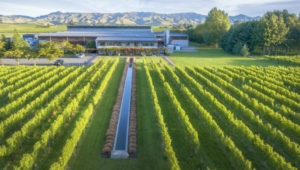
Villa Maria’s Malborough winery.
I’ve always have a soft spot for Villa Maria. It was my first introduction into the world of Sauvignon Blanc, and in particular, the New Zealand version of the variety. Decades later, I still love the fruit-forward nature and precision of even the base version of this wine: the Private Bin label.
Yes, the name implies a loftier level of quality, but Private Bin is actually the ‘everyday’ tier of Villa Maria wines. But I’ve always felt you can judge a winery by their entry-level products, and Villa Maria just shines in this space.
“You don’t see Villa advertising to the same degree as its competitors,” explains Rod Hallam, Canadian Market Manager for Villa Maria Estate. “We put it back into the wine. We don’t compromise on wine quality, regardless of the tier. A big chunk of our organic wine gets blended in our Private Bin range too.”
This is a $17.95 wine we’re talking about here—one that regularly earns critic’s rating in the 88-90 range, with the 2018 and 2019 vintages both delivering in spades.
THE MEMORABLE COVID VINTAGE
And the 2020 vintage could prove even better—but not for all the reasons Villa Maria might hope.
“We finished the harvest (in April) under strict quarantine rules,” Hallam relates. “Vintage had just begun, COVID was just starting to become big news and there was some concern that we might not even be able to harvest. The ‘viti’ team and the winemakers tend the vines all year for this moment, and you might not be able to make wine at all? The team had some sleepless nights! We had to bring a fleet of camper vans to our wineries for people to quarantine on site. The viticulture team was not actually allowed to be with the winemakers. Normally they’re shoulder to shoulder. So people had to live at the winery, away from their families, for 35 days, and changed from 12-hour to eight-hour shifts working around the clock.
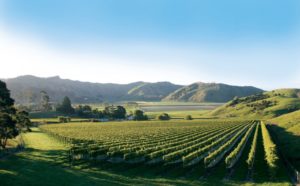
Villa Maria’s Katoa Vineyard in Gisborne, NZ.
“We were very lucky with Mother Nature, though,” Hallam notes. “Working with a skeleton crew, we got pristine conditions to reach our harvest targets, with some grapes coming in almost a month earlier than normal, which was just when COVID hit. This could actually be one of the best harvests ever for our Marlborough Sauvignon Blanc; we had a return of the cooler nights in 2020 that gives us that zesty acidity. And our Hawkes Bay red wines benefitted from longer hang time. Things just fell into place.”
But not all the planets are aligning.
“Inexpensive wines are going like crazy (in the market)—bag-in-box is like plus-30%,” Hallam says. “But you see a real slowdown once you go over $30. If the trend continues, from our perspective, there’s a concern for our 2020 vintage. We’re seeing great growth in our (more affordable) Private Bin category, but there could be slowdowns in our premiums. And those premium wines take a lot more work to make. For wineries everywhere, there are going to be some huge winners and losers in this contest.”
60 YEARS ON
That means big decisions of the eve of a big anniversary for Villa Maria. Next year will mark 60 years since a 21-year-old George Fistonich leased five acres of land from his father in Auckland. With just one of those acres under vine, he produced his first wine the following year under the Villa Maria banner (he felt the name made the winery sound more worldly.)
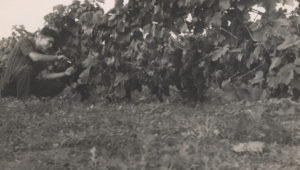
A young George Fistonich tends to the vines. Villa Maria’s founder will celebrate the winery’s 60th anniversary next year.
Today, it’s Sir George (Fistonich was knighted in 2009), and New Zealand’s most awarded winery is now operating in four regions across the country, from Marlborough on the South Island to Auckland, Gisborne and Hawkes Bay on the North.
While New Zealand is primarily known on this side of the planet for its Sauvignon Blanc—the nation has gone from about 12,000 acres to 200,000 acres of Sauvignon Blanc vines in the past 30 years—Villa Maria’s chief winemaker Nick Picone has actually been referred to as “Mr. Chardonnay” on his home turf.
“With New Zealand being such a diverse, cool-climate production and small production region, it’s difficult to get your customers to look beyond Sauvignon Blanc, but we grow Chardonnay throughout the country,” Hallam notes. That includes Villa Maria’s Private Bin East Coast Chardonnay (new at the LCBO), with its pervasive brightness and vibrant, tropical character. “Gisborne is green and lush—there you get some real ripe characteristics and underlying fig notes,” Hallam describes. “In Hawkes Bay, a region that’s almost identical to Bordeaux in terms of sunshine hours and rainfall, you get that lovely stonefruit. Then into Marlborough, you get cooler, and so freshness and acidity really comes through there. This wine is a blend of those three regions, trying to capture the expressions of each.”
FIGHTING FOR CHARDONNAY HONOURS
So which region produces the finest of the variety? “We have winemakers in each of those regions, and whether it’s Simon Fell up in Gisborne, or Nick Picone in Hawkes Bay, or Helen Morrison in Marlborough, each thinks their region makes the best Chardonnay,” Hallam smiles.
 Last year, Hawkes Bay earned boasting rights, with the Esk Valley Winemakers Reserve Chardonnay earning a Platinum Award and 97 points at the Decanter World Wine Awards.
Last year, Hawkes Bay earned boasting rights, with the Esk Valley Winemakers Reserve Chardonnay earning a Platinum Award and 97 points at the Decanter World Wine Awards.
Now all that said, it was Villa Maria’s 2018 Taylors Pass Sauvignon Blanc that earned the lone Best in Show award for its category at the 2019 Decanter ceremony—a rather rare accolade for a bottle that retails for just $30 Cdn. (“I managed to get an order for Canada,” Hallam enthuses. “July 25th is the release date at the LCBO.”)
SCREWCAP ONLY!
And what you will notice about that award-winner, as with all Villa Maria wines, is the absence of a cork.
“We became the first major winery in the world to go 100% screwcap in 2001,” Hallam says. “We’ve had some really fantastic wines that have been aged over the years. We did a recent tasting with a 2006 Syrah from Esk Valley and we were putting it up against iconic French wines. They aged beautifully. But more than anything, it’s about the consistency. You could open up a case that has been aged 10 years and see consistency, bottle after bottle.
Corks are clearly a sore spot for Hallam. “For me it’s so odd to have this ongoing discussion,” he continues. “The wine is good when it goes into the bottle. But the choice of cork can destroy it. When we talk about sustainability, this really bothers me. Allowing 3% to smell and taste like a wet, soggy newspaper for no other reason than the romance of a cork is a terrible thing. There’s no other industry in the world that would tolerate it. When you think of the hundreds of millions of cases of wine that are under cork closure, even with the lowest claims of cork taint of 1%, it’s still an enormous number—1% of a million is 10,000! Think through everything that is wasted by this choice of closure, including labels, foil, bottles, cartons, printing, wine and its shipping around the world. Think of how big this carbon footprint is—wasting the equivalent of one of every 100 full container ships!”
There’s also a customer loyalty argument. For what’s worse than an obviously tainted wine? A subtly tainted one. “It can be an awkward moment for people to confront their restaurant server (or return a bottle to the LCBO),” Hallam observes. “So people will just chew through a bottle of corked wine and simply not ever buy from that producer again.”
Which is fine for Villa Maria. Because with pandemic drinking on the rise, it’s nice to be satisfyingly predictable.
DID YOU KNOW
For all its winemaking prowess, New Zealand is not a big place. Square footage-wise—the North and South islands combined are about the same size as Colorado… Villa Maria was a founding member of Sustainable Winegrowing NZ in 1995 and is one of New Zealand’s largest organic producers. Its bottles are made from an average of 67% recycled glass, they’ve reduced their shrink wrap by the equivalent of 10 single-use plastic bags per pallet sent from their warehouse, and used label backing paper is recycled into baking paper, removing approximately 36 tons per year from landfill.
There’s a feature-length documentary that follows Villa Maria’s 2019 vintage, now streaming on Amazon Prime: Here’s a trailer:

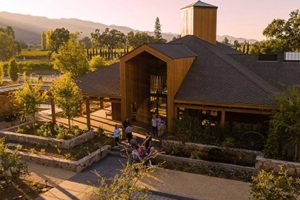
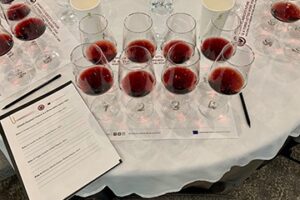
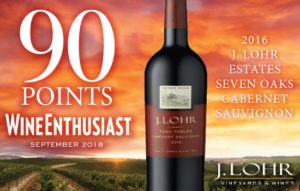
Leave a Reply
Your email is safe with us.